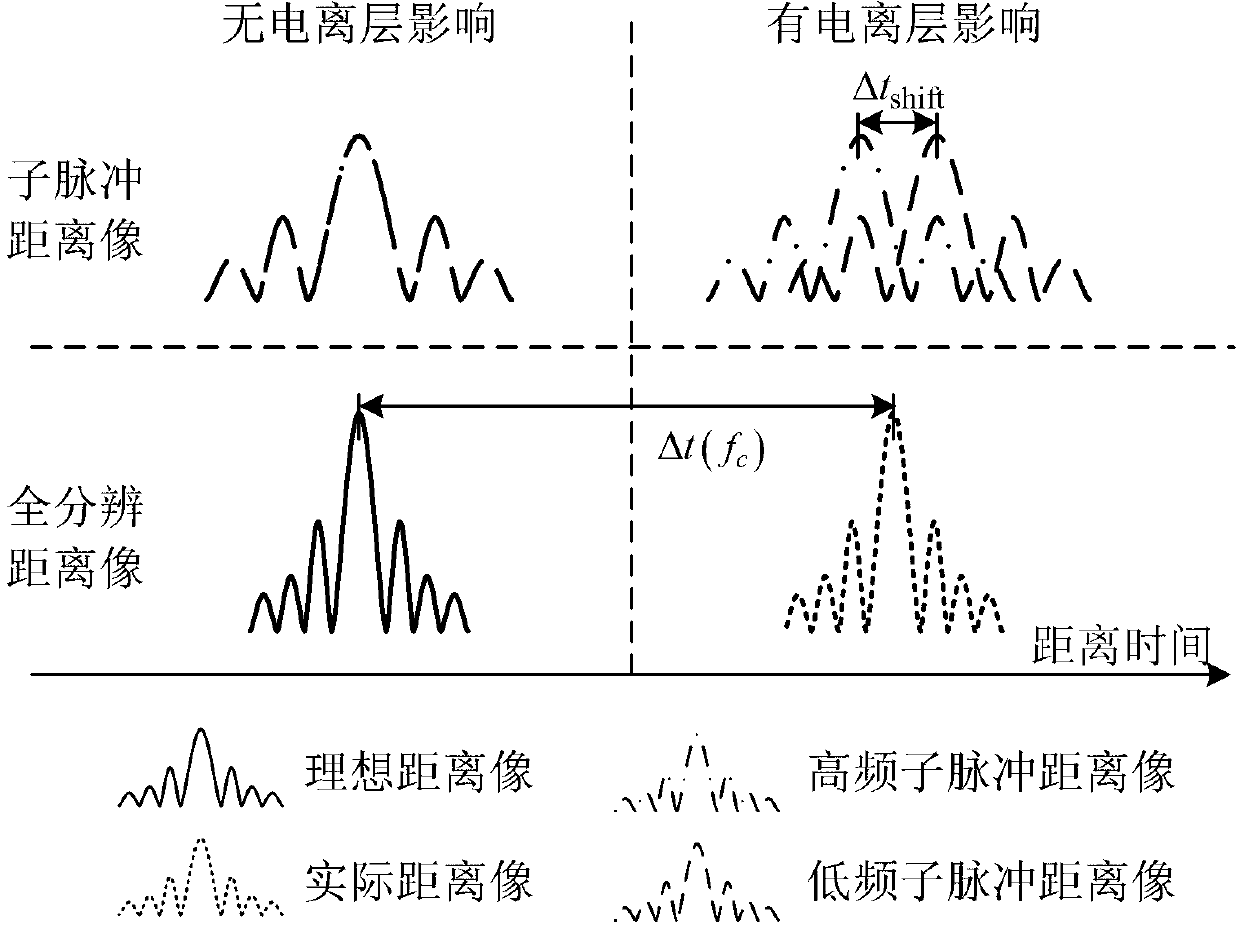Sub-range profile offset deviation-based satellite borne SAR (Synthetic Aperture Radar) ionosphere calibration method
A technology of seed distance and ionosphere, applied in radio wave measurement system, radio wave reflection/reradiation, utilization of reradiation, etc., can solve the problems of pulse time width measurement accuracy limitation, high performance requirements, and many error sources, etc. Achieve the effect of reducing the influence of system noise and ground clutter and improving the signal-to-noise ratio
- Summary
- Abstract
- Description
- Claims
- Application Information
AI Technical Summary
Problems solved by technology
Method used
Image
Examples
Embodiment Construction
[0024] The advantages of the present invention are verified below in conjunction with the processing examples of simulation data.
[0025] This embodiment takes L-band spaceborne SAR as an example (carrier frequency 1.25 GHz, LFM signal time width 30 μs, bandwidth 60 MHz, range image resolution 2.5 m).
[0026] Table 1 compares the relationship between the ionospheric TEC measurement accuracy and the signal-to-noise ratio of the prior art and the present invention when TEC=20TECU, and the sampling rate is 400MHz at this time. Table 2 compares the relationship between the ionospheric TEC measurement accuracy and the sampling rate of the prior art and the present invention when TEC=20TECU, and the signal-to-noise ratio is -40dB at this time. The measurement accuracy of ionospheric TEC in the prior art depends heavily on the signal-to-noise ratio and sampling rate. However, the present invention improves the signal energy through distance compression, and at the same time suppre...
PUM
 Login to View More
Login to View More Abstract
Description
Claims
Application Information
 Login to View More
Login to View More - R&D
- Intellectual Property
- Life Sciences
- Materials
- Tech Scout
- Unparalleled Data Quality
- Higher Quality Content
- 60% Fewer Hallucinations
Browse by: Latest US Patents, China's latest patents, Technical Efficacy Thesaurus, Application Domain, Technology Topic, Popular Technical Reports.
© 2025 PatSnap. All rights reserved.Legal|Privacy policy|Modern Slavery Act Transparency Statement|Sitemap|About US| Contact US: help@patsnap.com



